a&e features
Getting to know new Washington Bach Consort conductor Dana Marsh
Organist/singer/conductor brings period music expertise to Washington ensemble
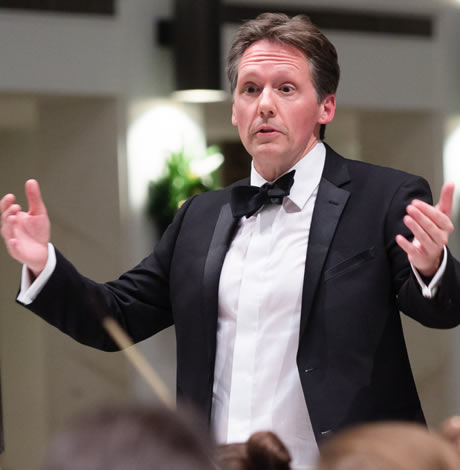
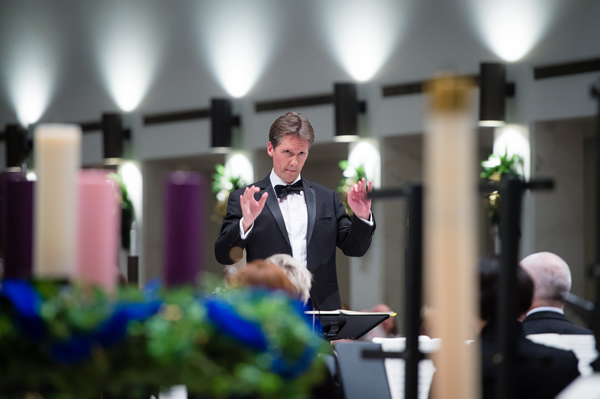
Dana Marsh says he developed an affinity for classical music at an early age. (Photo by David Betts; courtesy Metropolitan Photography)
To say the Washington Bach Consort was sent reeling with the June 2016 death of its founder J. Reilly Lewis is an understatement.
Lewis founded the Consort in 1977 dedicated to the music of Johann Sebastian Bach — arguably the most towering figure in the history of western music — and his contemporaries. Its board opted to use its 2017-2018 40th season as a lengthy audition process for a new artistic director. Dana Marsh, an Eastman-trained singer/conductor/organist, has secured the position and will open the 41st season on Sunday, Sept. 16 with “Handel & Bach: Sing a New Song” at National Presbyterian Church (4101 Nebraska Ave., N.W.; details at bachconsort.org).
Marsh received “very enthusiastic support” from Consort musicians, Charles Reifel, head of the group’s artistic committee and a Consort board member, said in a press release. “We feel very fortunate to have found him.”
He holds a master’s and doctoral degree in historical musicology from the University of Oxford and has been hailed by the Los Angeles Times as an “energetic and persuasive conductor” and dubbed a “powerful and expressive countertenor” by the New York Times. He taught early music history at Oxford and Cambridge universities.
Marsh, 53 and gay, is starting his fifth year as associate professor of music and director of the Historical Performance Institute at the Indiana University Jacobs School of Music. He’ll continue there and commute to Washington to lead the Consort. Marsh spoke to the Blade by phone last week from his Indiana office. His comments have been slightly edited for length.
WASHINGTON BLADE: It sounds like your work at the Historical Performance Institute will dovetail with the Consort’s mission. True?
DANA MARSH: Yes, there’s a great deal of overlap. What I do at Indiana University is considered historical performance where we use period instruments that are different from the versions used in modern orchestras that have been updated hugely. We try to do a bit of period drama and I direct at department at Indiana University that deals with that and the Washington Bach Consort also performs with period instruments.
BLADE: I was reading some liner notes recently that said something to the effect of what was actually likely heard in Bach’s churches at the time is not something we would find pleasant today. Is that true?
MARSH: There may be some truth to that speculation, that it would have sounded very out of tune to our ears. That could be the case but probably isn’t at least as far as the tuning goes. The performance practice itself, the way they made music and expressed text, some of that might have come as a shock to us, but when we start from the first temperament that we know of, they were very strict temperaments and they were probably more in tune than modern equal temperament because there weren’t as many key areas emphasized so it actually means it was very, very in tune.
BLADE: What is the appeal of period instrumentation for you?
MARSH: The idea of all this isn’t to tell people not to play Bach on modern instruments. There are lots of people who play on modern instruments who understand the detail and nuances (of early music) quite well. You can on modern instruments come extremely close to creating the same types of historical effects musically speaking that you can on earlier instruments. … One thing you certainly wouldn’t want to do is play lots of late 18th or 19th century music on tunings that were devised for the early 17th century. We’d think everyone was playing out of tune or incompetent. It has to fit the music it goes with.
BLADE: How did you develop an affinity for historically informed performance?
MARSH: I think it has to do with my really early musical training. Early on in life, when I was a choir boy both in New York and in England, first at the St. Thomas Choir School then at Salisbury Cathedral in England, a lot of the music (we performed) tended to be from the 15th and 16th centuries, so I felt a super strong affinity for those styles. I had a passion to find out in much more detail all I could about early music.
BLADE: Since you encountered it at a young age, is there a nostalgia factor for you with that music the way the Beatles and Motown and stuff like that has for the more general population?
MARSH: Yes, I would say so. I think whatever music we listen to, we tend to associate it with particular times in our lives, an experience, a smell or any sensory type of thing and you know, that automatically speaks to us from the inside in a certain way but there’s an intellectual fascination as well and that can be a great part of it too.
BLADE: Was your family musical?
MARSH: Yes, my dad was first violinist at the time for a well-known string quartet and he was on the road doing 50-60 concerts a year. My mom was an elementary school music teacher so there was no escape. … It was in my blood stream from a very early age.
BLADE: What’s life like in Bloomington, Indiana?
MARSH: Bloomington is an awesome town, right here in the middle of Indiana, this bastion of redness that’s very conservative but Bloomington has always been more liberal even going back to the 1950s. … It’s also aesthetically beautiful and there’s lots going on in the arts. There are over a thousand concerts a year associated with the school of music and seven operas done on a professional scale each year. It’s a surprisingly progressive and culturally rich town.
BLADE: How are you going to manage flying back and forth logistically?
MARSH: I checked into those concerns before I applied. The flights from Indiana to Reagan are incredibly efficient. I can leave my house by 6 a.m. and be on the Metro by 9:30. I’ll be in D.C. about half of September and more throughout the fall of course. Many of my colleagues have very full performing careers and are on the road so as long as one can shuffle everything around, the students and the school are totally behind it. It helps maintain their reputation.
BLADE: It sounds like a lot. Are you concerned you might spread yourself too thin?
MARSH: That’s always a possibility but for me things like that are sometimes almost counterintuitive. I find the more I’m in one situation, the more likely I am to get in a rut. If there’s something stimulating happening in the other situation, it helps me stay engaged (in my main work). It energizes me.
BLADE: What do you do at I.U.?
MARSH: I conduct and teach. I sort of have to wear a lot of hats from administrative functions to teaching to performance and then I also coach individual vocalists on performance style and conduct our early music ensembles. We have a bit of a rotation among faculty and with my administrative job, there are two entities. At the Historical Performance Institute is the musical research side of things and then the Historical Performance Department, which is the educational institute, that’s where the school of music deals with the students and faculty and everything that involves.
BLADE: I imagine you had been familiar with the Washington Bach Consort prior to hearing of the position?
MARSH: Absolutely. In fact, a few friends of mine who are professional singers had sung solos for Reilly in the past.
BLADE: Would you say the Consort has an international reputation?
MARSH: I would definitely say national, maybe not so much international and that’s one of the things we want to work on and will be an essential part of our new strategic plan.
BLADE: What is the Consort’s annual operating budget?
MARSH: I believe it’s about $1 million.
BLADE: Bach’s music is so heavily steeped in Christianity. Are you a Christian and do you feel Christians, people of other faiths and atheists can savor Bach equally or does his music tend to have added resonance for Christians?
MARSH: I was brought up in the church and Christianity though from a spiritual standpoint, I would say my horizons have broadened a bit and I would categorize my beliefs in that way now. There’s a lot of great art that came out of Christianity. When you think of all the people designing stained glass or building cathedrals, there had to have been skeptics among them and yet anyone can look at that art and be entirely struck by it. … I don’t think you have to be a believer to fully grasp what the composer means. … There are atheists who write about theology and are fascinated by it. … You can be an atheist and be absolutely struck by, say Bach’s “Mass in B Minor.”
BLADE: How religious does the elite classical music performance world tend to be in your experience?
MARSH: Certainly that community is well represented but I wouldn’t say it’s a majority. I would say it’s more like a long continuum and you have people whose beliefs would overlap with some of the places we perform like the National Cathedral or other outstanding church programs in the D.C. area, but also go exceptionally far beyond that as well.
BLADE: Is Bach really considered early music?
MARSH: The term early music has been something of a moving target. It used to be considered anything before 1750 with the emphasis on medieval and renaissance music but it kept moving forward and now it can be anything up to the end of the 19th century but it’s more about understanding the instruments they had at their disposal and how musical values have changed over time.
BLADE: When did you find out you got the job?
MARSH: I got the news in the middle of May but it wasn’t announced ’til August. I think the board wanted to get as much mileage out of the announcement as they could.
BLADE: What do you have planned for the opening concert?
MARSH: It will be very celebratory. We’re doing one of the Bach cantatas (BWV 190). The translation is “Sing Unto the Lord a New Song.” The second piece is by Handel and it’s his ode to St. Cecilia, the patron saint of musicians, a wonderfully rich piece. Then the final piece will be the Bach “Magnificat,” which is probably the best known of the three.
BLADE: How many singers and players are in the Consort?
MARSH: There are three formats: the subscription series at the National Presbyterian; the cantata series (six per year) at Church of the Epiphany and St Peter’s Capitol Hill; and the chamber series is held at the First Congregational FCC at 10th and G Streets. For the subscription series, where we do the larger-scale performances, there’s a choir of 16 and an orchestra of maybe 30 players. For the chamber series, it’s much smaller.
BLADE: So Bach wasn’t working with huge choirs and orchestras then in his day?
MARSH: No. He was always complaining to the town council about it. Sometimes he had just eight singers and proportional orchestras with single instruments except for the two violin parts.
BLADE: Did you ever meet Dr. Lewis?
MARSH: No, I never did but … I feel I met him in a way through his incredible legacy. (The Consort members) are really very nice and care about each other and that’s not always the case in organizations such as these.
BLADE: Do you still play the organ? (Marsh’s undergraduate major was organ performance)
MARSH: I do but not as much as I did. The first four years I was back in the U.S., I played at the Episcopal Cathedral in Indianapolis but since I’ve been at I.U. I haven’t been playing as much. I have some recitals scheduled next year. I’ll be doing one in New York in March and I’ll be playing on some noon recitals as well. There’s always an organ prelude with the cantatas so I’ll be doing a few of those. I’m definitely keeping the fingers moving.
BLADE: Would you say you’re a conductor first and foremost?
MARSH: At the moment, I’m doing more conducting than singing or playing. I’m doing the least amount of singing but sometimes, truth be told, I miss it.
BLADE: What’s it like conducting a choir of professional singers? Do you have to remind them of cutoffs and do they go flat and all the stuff that comes up in church volunteer choir or not so much?
MARSH: A lot of the same issues come up but in a different way. … You end up going more deeply into the details metaphorically of how you want to achieve certain effects but in a way that everyone can relate to. It’s important to identify as quickly as possible some common principles that can apply to as many people as possible that require the least amount of adjustment as possible for the biggest possible change or results.
BLADE: (Concert organist) Cameron Carpenter said at a recital I was at a few months ago that Bach was not someone anybody today would want to be around. I’m paraphrasing, but he basically said Bach was someone you’d avoid if you saw him on the Metro, a fundamentalist religious zealot. Do you agree?
MARSH: By today’s standards he probably would be considered a religious zealot but those kinds of things change over time. For his day, he might have been very middle of the road. I wouldn’t argue with what Cameron said and yeah, there’s definitely documentary evidence that he could be extremely cantankerous but it tended to be with the authorities because he felt he was under supported. The guy had a family of nearly two dozen kids and was responsible for all the music in the town so I’m sure there was a lot of pressure. … I’m sure he had a gentler side as well but only a time machine would tell us that.
BLADE: LGBT issues seem kind of murky in classical music. On one hand, it’s treated as a non-issue as long as your performance is solid. On the other hand it can be so staid that the downplaying of one’s sexuality on the stage can feel disingenuous in its own right. What’s your take on all that?
MARSH: There does tend to be a way of casting aside certain social issues in deference to the music. There’s been a great deal more written in the last 40 years about how some of the great composers might have been gay. There has been a whole branch of musicology devoted to this. Philip Brett, one of the founders of that scholarship, was a mentor of mine. His edited book of 25 years ago, “Queering the Pitch: the new Gay and Lesbian Musicology,” made the first strides in this area. Handel, Schubert and Tchaikovsky, among others, are figures for whom a good deal of scholarly research has been undertaken with consensus pointing toward their being gay. A great deal more ground has been covered since. And now the whole idea of non-binary gender issues opens wider horizons as well so it’s not an either-or thing, it’s one of those long continuums that people can be situated at many different places along it. We’re seeing more trans singers now and one I know, a student at I.U., is absolutely one of the best I’ve ever heard and has an incredibly bright future ahead. I think we can all be kind of surprised by the discoveries we’ll continue to make in this area and how relevant they truly can be.
BLADE: How does it help us today to know that?
MARSH: Although attitudes toward sexuality have changed substantially over time during different centuries, same-sex attraction is something that can’t be whitewashed away from history. Of course, most of the evidence that survives has to be documentary, or iconographic, and can only capture so much of a layer of social behavior that is ultimately ephemeral.
BLADE: How long have you been out professionally?
MARSH: I was kind of late. I didn’t come out ’til I was in my 30s. I had been open to some friends sooner. I almost got married to a woman once … and I identified as a little more bisexual at the time I guess. I don’t really know how to put that. But now that I look back, I think things worked out as they should have.
BLADE: Did coming out have any impact on your musical career?
MARSH: Not in the least. Nobody batted an eyelash really.
BLADE: Are you in a relationship now?
MARSH: Yes, he moved in with me last December. He’s in an entirely different field and I find that refreshing. He’s the most special person I’ve ever met and I just feel lucky every day.
BLADE: How long have you been together?
MARSH: We first started hanging out four years ago.
BLADE: What’s your vision for the Consort?
MARSH: Kind of circling back to what we were saying about raising its profile on an international basis but also continuing, through recordings and tours, to do outreach work. We see about 3,000 students a year in a project called Bach to School. That is important since music education has been so heavily written out of schools. We have a real job to do in helping expose these kids to music.
BLADE: Sometimes it feels like society is getting overall kind of dumbed down. I could point to many challenges various classical music organizations are facing. Does finding an audience and continuing to perform feel like an uphill battle?
MARSH: No, not at all. I think performing musicians have always had to balance these forces of creative autonomy with economic reality. That’s been a challenge going back 300 years. Being able to balance those and find ways to deal with them entrepreneurally betters the art for everyone.
BLADE: But is there a danger in spending time thinking like an entrepreneur and spending time doing outreach in schools and so on, that the music itself may suffer?
MARSH: Not at all. I think over the long haul it has the opposite effect. A lot of the obstacles we’re facing now deal with perspectives that have already had their time so maybe now it’s time to create new ones. This whole idea that you go to a concert and have a very passive audience that is shushed … these are conventions we’ve created in the last century that weren’t around before and we’ve clung to them and they’ve created some of our biggest challenges today. But there are organizations that manage to keep tradition and overcome these challenges like the L.A. Philharmonic or the Handel and Haydn Society or the Bach Consort. … There are opportunities there when you start thinking far outside the box.
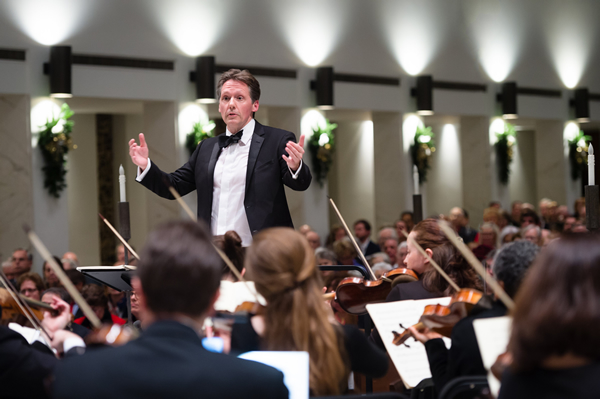
Dana Marsh says challenges in classical music often stem from an over-reliance on outdated concert practices. (Photo by David Betts; courtesy Metropolitan Photography)
a&e features
Have yourself a merry John Waters Christmas
Annual holiday show returns to Alexandria and Baltimore
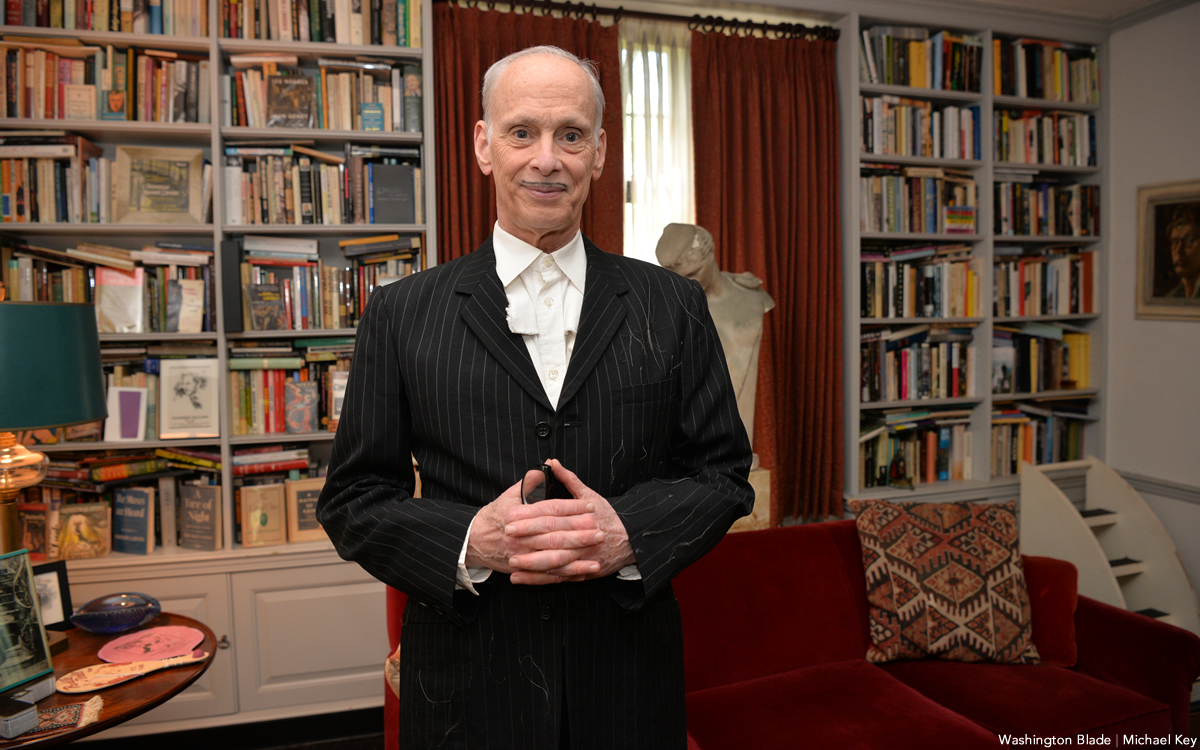
When it comes to iconic Christmas scenes in movies, none can top the tree-toppling tantrum thrown by cha-cha heels-deprived Dawn Davenport in John Waters’s fifth full-length feature “Female Trouble” from 1974. Therefore, it’s not surprising that Waters continues to make art out of Christmas, performing his spoken word Christmas tour in cities across the country. Waters has even more reason to celebrate with the release of his new red vinyl 7” single, a cover of Little Cindy’s “Happy Birthday Jesus (A Child’s Prayer)” on the A-side, and “A Pig Latin Visit From St. Nicholas” on the B-side. If you’re still looking for unique Christmas gifts, consider this record. As always, John was kind enough to make time for an interview in advance of his tour dates.
BLADE: John, in preparation for this interview with you, I went back and listened to Little Cindy’s original rendition of “Happy Birthday Jesus (A Child’s Prayer)” on your “A John Waters Christmas” CD.
JOHN WATERS: One thing I did, if you notice, I make the same stumble in my recording that she did in the original.
BLADE: It sounded to me like she got choked up.
WATERS: No, I think she just stumbles over a word, so I stumbled over the same word. It’s appropriation, insanely.
BLADE: Is this a song you first became aware of in your youth or when you were an adult?
WATERS: When I was doing the Christmas album, I had this friend named Larry Benicewicz. He was kind of my idea man with music. He knew every single old record. I would say to him, “Weird Christmas songs,” when we were doing a soundtrack, or a song about bears, or a song about this, and he would give me all these tapes. It was one of the ones he played for me. A lot of the songs I put in my movies and on my records, I did know as a kid. I did not know this one, but I immediately embraced it. I don’t think it’s campy. I think it really is spiritual in a weird way. My doing it makes it a novelty record. I am really for novelty records, and there aren’t any anymore. Why was there not a COVID novelty record? That’s insane. The dance “The Bug” that’s on the “Hairspray” soundtrack would be perfect for COVID.
BLADE: The thing that struck me was that for a Christmas song in the voice of a child, a kind of death pall hangs over it, with lines like, “If I was good you’d let me live with you” and “they nailed you to the cross, they wanted you to die.”
WATERS: All of it! When I see children at midnight mass kneeling in front of a nude man nailed to a cross, I feel like I’m at The Eagle! It is S&M, it’s creepy. I took the same cover (photo) from her record to parody and put my face on it. The same thing I did with The Singing Dogs last year when I covered (their version of) “Jingle Bells.” I’m really into novelty records. I love them and I’m trying to bring them back. I don’t expect anybody to ever play these records. Even The Singing Dogs one said on it, “Please do not play this record” [laughs]. And the flipside, the Pig Latin version, is almost impossible to listen to.
BLADE: I’m so glad you mentioned that. “A Pig Latin Visit From St. Nicholas” reminded me of the lost art of speaking in Pig Latin. I also recall watching the PBS series “Zoom” as an adolescent and learning to speak “ubbi dubbi,” a distant relative of Pig Latin. Do you think that the time is right for a Pig Latin or ubbi dubbi revival?
WATERS: Here’s the thing, I never could pick up any language, except Pig Latin. I’ve been in every foreign country. Foreign countries have given me money to learn to speak the language. I can never do it! But Pig Latin…my parents and other parents in the ‘50s spoke Pig Latin so kids couldn’t understand what they were saying. Then my mother taught it to me, and I used it. The hardest take to shoot in “Pink Flamingos” was not eating the dog shit. It was when the cast skipped, in one take, saying “E-way, are-yay e-they ilthiest-fay eople-pay in-hay e-they ole-hay ide-way orld-way.” We’re the filthiest people in the whole wide world in Pig Latin. We had to do so many takes so they could do it once without screwing it up. In “Polyester,” Edith (Massey) answers the phone, “ello-hay.” I did a photo piece where it was all subtitled in Pig Latin. Like “osebud-Ray” (from “Citizen Kane”) or in “Streetcar,” “ella-Stay!” [Laughs] All the iconic dialogue translated into Pig Latin. My assistant who helped me do it, had never heard of Pig Latin. She really got good at it because she lived in many foreign countries and can pick up languages. But it’s not that easy to do it correctly and read it. Your computer will translate into Pig Latin.
BLADE: AI understands Pig Latin?
WATERS: I guess that’s AI. It wasn’t 100% right, but it was close. I can speak it if I look at it, but just do a bit at a time. It was a challenge that no one would possibly care about or want to do.
BLADE: I think you pulled it off very well.
WATERS: If you want people to leave on Christmas morning, you put it on. That’s how you get your guests to leave. It’s time to go.
BLADE: Ood-gay i-bay! How did your relationship with record label Sub Pop, which released 2021, 2022, 2024, and new 2025 holiday singles, come about?
WATERS: I believe the first thing I did for them was “Prayer to Pasolini.” They came to me through Ian Brennan. He’s won a couple Grammys for World Music, but he is also is one of my agents who does the Christmas tour and a lot of my shows, anything with music. He helped me arrange each one of the songs. He had a relationship with Sub Pop. It was perfect. My friends in Baltimore, (the band) Beach House, have had huge success.
BLADE: That’s right, they’re on Sub Pop!
WATERS: Yes! I’m happy to be on it. I’ve even been to the warehouse and posed for pictures like Jackie Suzanne used to do.
BLADE: Is there any chance that “A John Waters Christmas” might be reissued on vinyl by Sub Pop?
WATERS: No. It’s such a nightmare to get the rights and to renew them. You have to find the publisher and the writer, and they usually hate each other. It doesn’t matter if it’s obscure or famous, it’s hard to get. You have to make the deal. The singer doesn’t get anything unless they play it on the radio. It would be so complicated legally, and there would be such a [laughs] tiny audience for it. I hope it will come out again. The same thing with the one for Valentine’s Day. I had two of them that did quite well when they came out; “A Date With John Waters and “A John Waters Christmas.” The “John Waters Christmas” album is still the soundtrack that plays whenever I’m doing my spoken word Christmas show as people are entering the theater.
BLADE: Aside from your annual Christmas show tour, what else do you do for the holidays now, and are there any traditions that you’ve carried over from your family?
WATERS: Certainly! I have two sisters, my brother’s widow, and me, so there are four and we take turns each year to have the Christmas dinner. Mine was last year. An entire sit-down dinner. Mom’s China, the silverware, the entire full dinner. It’s pretty traditional. I don’t have a Christmas tree, but I do decorate the electric chair from “Female Trouble.” That is a tradition in my family. We do have Christmas decorations, but they’re usually weird ones that fans sent me. I have one with Divine knocking over the Christmas tree, and the Christmas tree lights up, all sorts of amazing things. There is definitely a tradition here that might be a little altered, but it is definitely a tradition. I used to have a giant party every year, but COVID ended that. I still wouldn’t want 200 people in my house breathing right now.
BLADE: I was looking at your tour schedule and wondered if there are any new cities in which you’ve never performed the John Waters Christmas show that have been added to this year’s schedule?
WATERS: I don’t think there’s a city in America in which I haven’t done one show! The only places I haven’t been to are Hawaii and Alaska. I could do it there, but it’s too long on a tour. I can’t think of a city I haven’t played in in America over the last 50 years. The Christmas show is completely different every year. It doesn’t matter if you saw it last year.

Some gifts scream practical, others whisper luxury, and a few flat-out blur the lines. From cocoa that feels ceremonial to a cologne that linger like a suggestive smirk, this year’s ultimate gift picks prove that thoughtful (and occasionally naughty) presents don’t have to be prosaic. Welcome to your holiday cheat sheet for festive tangibles that get noticed, remembered, and maybe even result in a peck of gratitude planted under the mistletoe. Consensually, of course.
Amber Glass Champagne Flutes
Pop the champs – but make it vintage. These tulip-shaped stunners in amber-tinted glass bring all the Gatsby vibes without the Jazz-age drama. Whether you’re toasting a milestone or celebrating a Tuesday, their seven-ounce capacities and hand-wash-only care make ‘em as practical as they are pretty. Pair with a thoughtful bottle of bubs and gift with a glittering wink. $18, NantucketLooms.com
Disaster Playbook by Here Comes the Apocalypse
Because the end of the world shouldn’t be a solo act, this spiral-bound guide is your step-by-step roadmap to surviving and thriving when everything else goes sideways, which might be sooner than you think. Packed with checklists, drills, and a healthy dose of humor, it’s like a survival manual written by your most prepared (and slightly snarky) friend. Whether you’re prepping for a zombie apocalypse or, more realistically, REVOLUTION!, this playbook’s got your back. $40, HereComesTheApocalypse.com

Wickless Vulva Candles
Bold, luxurious, and completely flame-free, CTOAN’s wickless candles melt from beneath on a warmer, releasing subtle, sophisticated fragrances, like sandalwood or lavender. The vulva-shaped wax adds a playful, provocative element to any space –perfect for a bedroom, living room, or anywhere you want elegance with an edge. A gift that celebrates form, intimacy and self-expression, no fire required. $39, CTOANCO.com
Villeroy & Boch Royal Classic Christmas Collection
Every meal is a mini celebration – with whimsy at every place setting – in Villeroy & Boch’s Royal Classic festive dinnerware collection that hits all the right notes. Made from premium German porcelain, it features nostalgic little toys, nutcrackers, and rocking horses in delicate relief, giving your holiday spread a playful but refined twist. Dishwasher- and microwave-safe, it’s luxe without the fuss. Gift a piece to a special someone, or start a collection they’ll use (and show off) for years to come. $22-$363, Villeroy-Boch.com
Greenworks Electric Lawnmower
You a ’hood queen who considers lawn care performance art – or just wants to rule the cul-de-sac in quiet, emission-free glory? Greenworks’ zero-turn electric mower has the muscle of a 24-horsepower gas engine but none of the fumes, drama or maintenance. Six 60V batteries and a 42-inch deck mean you can mow up to two-and-a-half acres on a single charge – then plug in, recharge, and ride again. It’s whisper-quiet, slope-ready, and smooth enough to make you wonder why you ever pushed anything besides your queer agenda. The perfect gift for the homeowner who loves sustainability, symmetry, and showing off their freshly striped yard like that fresh fade you get on Fridays. $5,000, GreenworksTools.com
Molekule Air Purifier
For the friend who treats their space like a sanctuary (or just can’t stand sneezes), the Molekule Air Pro is magic in motion. Covering up to 1,000 square feet, it doesn’t just capture allergens, VOCs, and smoke – it destroys them, leaving your air feeling luxury-clean. FDA-cleared as a Class II medical device, it’s serious science disguised as modern design. Gift it to your city-dwelling, pet-loving, candle-burning friend who likes their living room as pristine as their Instagram feed. $1,015, Molekule.com
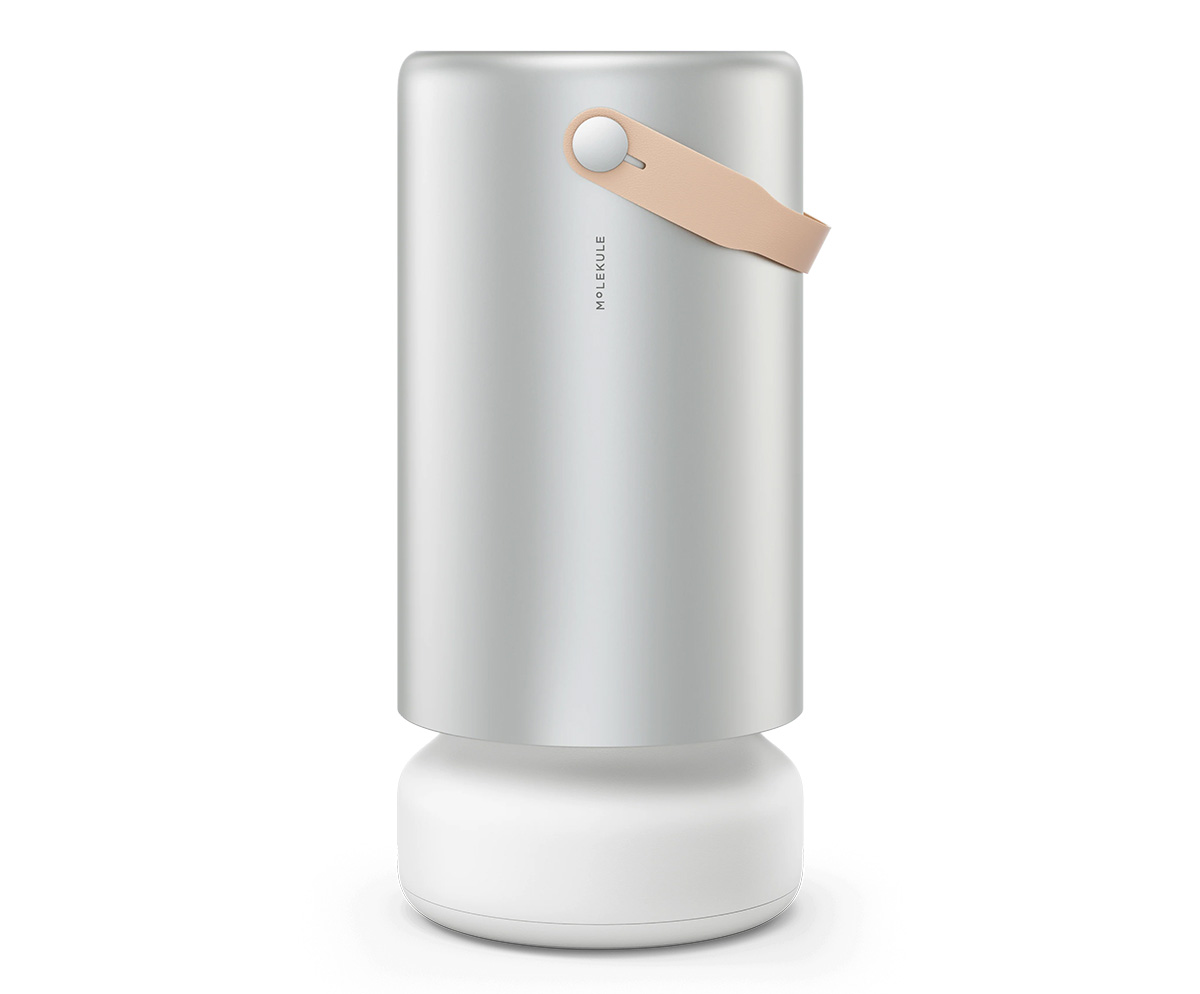
Cipriani Prosecco Gift Set
Effervescent with stone-fruit sweetness and a touch of Italian flair, the Cipriani Bellini & Prosecco gift set brings brunch-level glamour to any day of the week. The Bellini blends rich white-peach purée with sparkling wine, while the dry ’secco keeps things crisp and celebratory. Pop a bottle, pour a flute, and suddenly winter weeknights feel like a party – even with your pants off. $36, TotalWine.com
Woo(e)d Cologne
British GQ recently crowned Woo(e)d by ALTAIA the “Best Date Night Fragrance,” and honestly, they nailed it. Confident without being cocky – smoky gaïac and Atlas cedarwood grounds the room while supple leather and spicy cardamom do all the flirting – it’s a scent that lingers like good conversation and soft candlelight. Gift it to the one who always turns heads – or keep it for yourself and let them come to (and then on) you. $255, BeautyHabit.com

Lococo Cocoa Kit
Keep the run-of-the-mill mugs in the cabinet this Christmas and pull out Lococo’s handcrafted Oaxacan versions that demand you slow down and sip like it matters. Paired with a wooden scoop, rechargeable frother, and Lococo’s signature spice hot-chocolate blend (vegan, gluten-free, with adaptogenic mushrooms), this holiday kit turns Mexi-cocoa into a mini ritual you’ll look forward to. Perfect for anyone who loves a little indulgence with a side of ¡A huevo! energy.
Manta Sleep Mask
Total blackout, zero pressure on the eyes, and Bluetooth speakers built right into the straps, this ain’t your mama’s sleep mask — but it could be. The Manta SOUND sleep mask features C-shaped eye cups that block every hint of light while ultra-thin speakers deliver your favorite white noise, meditation, or late-night playlist straight to your ears. With 24-hour battery life, breathable fabric, and easy-to-adjust sound, it turns any bed (or airplane seat) into a five-star sleep suite. Perfect for anyone who treats shut-eye like an art form (or just wants to escape their roommate’s late-night bingin’ and/or bangin’). $159, MantaSleep.com

Shacklelock Necklace
Turn the industrial-chic vibe of a shackle into a sleek statement. Mi Tesoro’s platinum-plated stainless-steel necklace sits on an 18-inch wheat chain, featuring a shackle-style latch pendant that’s waterproof, tarnish-free, and totally fuss-les. Beyond style, it nods to a classic gesture in the queer leather community: replacing a traditional Master lock with something elegant to quietly signal belonging to someone special. Wear it solo for a minimalist edge or layer it like you mean it; either way this piece locks in both your look and your intentions. $90, MiTesoroJewelry.com
Parkside Flask Mojave Edition
Wine nights get a desert glow-up with Parkside’s limited-edition 750-milliliter all-in-one flask draped in sun-washed bronze and badland hues like sage, sand, and terracotta – with magnetic stemless tumblers that snap on for effortless shareability. It keeps your vino chilled for 24 hours, pours without drips (no tears for spilled rosé, please), and even lets you laser-engrave your own mantra or inside joke. Perfect for picnics, surprise rooftop clinks, or gifting to your favorite wine (or desert) rat. $149, HighCampFlasks.com

Mikey Rox is an award-winning journalist and LGBT lifestyle expert whose work has published in more than 100 outlets across the world. Connect with him on Instagram @mikeyroxtravels.
a&e features
Meet Mr. Christmas
Hallmark’s Jonathan Bennett on telling gay love stories for mainstream audiences
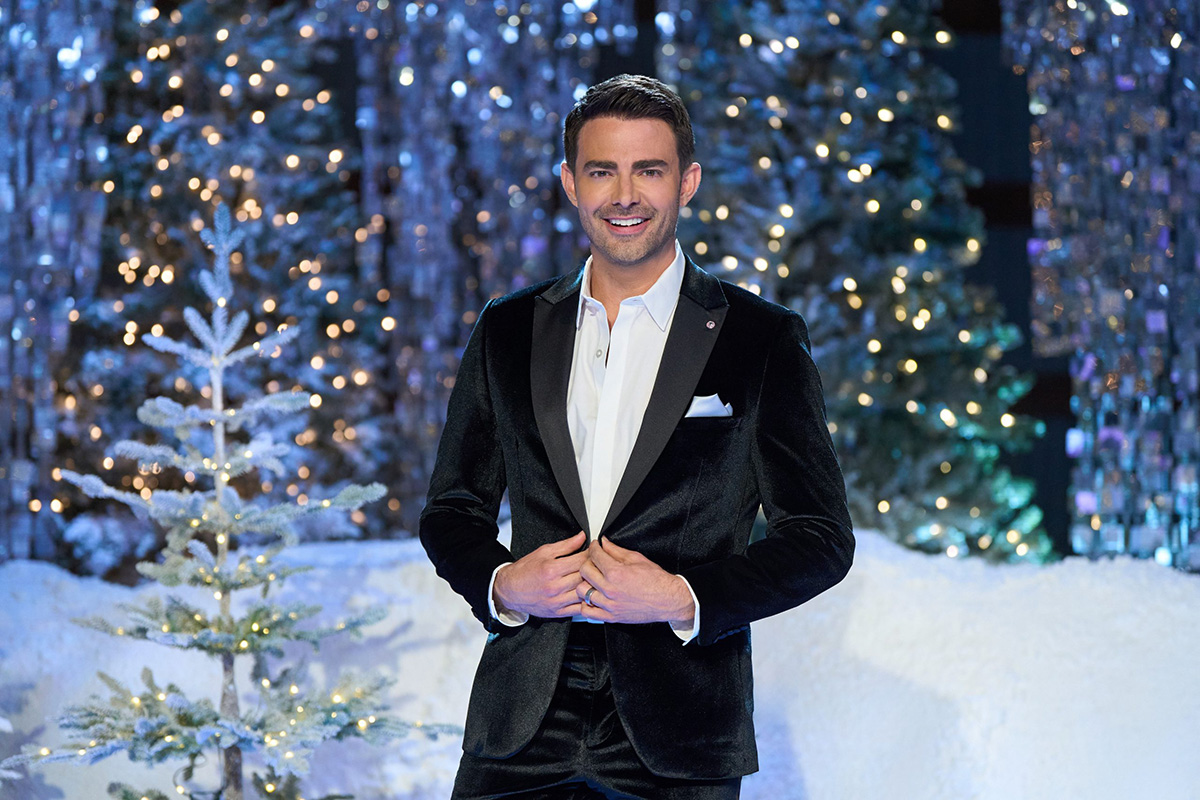
Jonathan Bennett believes there are two kinds of people in the world — those who love Hallmark movies and liars. And in Season 2 of Finding Mr. Christmas, which the Mean Girls star co-created with Ben Roy, Bennett is searching for Hallmark’s next leading man.
“It’s so fun for people because everyone in their life has someone they know that they think should be in Hallmark movies, right? The UPS driver, the barista at the coffee shop, the dentist,” Bennett says. “So we’re testing their acting abilities, we’re testing who they are, but we’re also looking for that star quality — the thing that makes them shine above everyone else. It’s almost something you can’t explain, but we know it when we see it.”
Season 2’s cast includes a former NFL player for the Green Bay Packers, a few actors, and a realtor. The 10 men compete in weekly festive-themed acting challenges, one of which included having to ride a horse and act out a scene with Alison Sweeney. The contestants were chosen from a crop of 360 potential men, and Bennett gives kudos to the show’s Emmy-nominated casting director, Lindsay Liles (The Bachelor, Bachelor in Paradise).
“She has a tough job because she has to find 10 guys that are going to be good reality television, but also have the talent to act, carry a scene, and lead a Hallmark movie eventually,” he says. To be the right fit for a Hallmark leading man, Bennett singles out five key characteristics: you have to be funny, charming, kind, have a sense of humor, and you have to do it all with a big heart.
Of course, Finding Mr. Christmas wouldn’t be Finding Mr. Christmas without its signature eye candy — something Bennett describes as “part of the job” for the contestants. “I can’t believe Hallmark let me get away with this. I dressed them as sexy reindeer and put them in harnesses attached to a cable 30 feet in the air, and they had to do a sexy reindeer photo shoot challenge,” he says with a laugh. “This season is just bigger and bolder than last. People are responding to not only all the craziness that we put them through, but also comparing and contrasting the guys in their acting scenes when we do them back-to-back.”
Season 1 winner Ezra Moreland’s career has been an early testament to the show’s success at finding rising talent. On seeing the show’s first winner flourish, Bennett says, “Now to watch him out in the world, just booking commercial after commercial and shining as an actor and a model, I think the show gave him the wings to do that. He learned so much about himself, and he took all that into his future auditions and casting. He just works nonstop. I’ve never seen an actor book more commercials and modeling gigs in my life.”
Bennett has been a star of plenty of Hallmark movies himself, including the GLAAD-award-winning The Groomsmen: Second Chances, which makes him a fitting host. Among those movies are 2020’s Christmas House, which featured the first same-sex kiss on the network and had a major impact on Bennett’s career as an openly gay man. “Hallmark’s been so great about supporting me in queer storytelling. But again, I don’t make gay movies for gay audiences. I make gay love stories for a broad audience, and that’s a huge difference, right? We’re not telling stories inside baseball that only the gay community will understand.”
He continues, “The backdrop of a Hallmark Christmas movie is very familiar to these people who watch. And so when you tell a gay love story, and you tell it no differently than a straight love story in that space, they’re able to understand. It’s able to change hearts and minds for people who might not have it in their lives.”
While Hallmark has become a major staple of Bennett’s career, he started off wanting to be a Broadway actor. And before the first season of Finding Mr. Christmas aired, Bennett took a break from TV to make his Broadway debut in Spamalot, replacing Michael Urie as Sir Robin and starring alongside Ethan Slater and Alex Brightman.
“That was my dream since I was five years old – then I booked a movie called Mean Girls, and everything kind of changes in your life. You no longer become a person pursuing Broadway, you become a part of pop culture,” Bennett recalls. “And to be honest, when I hit 40, I was like, ‘I’m probably never going to get to live that dream.’ And that’s okay, because I got to do other dreams and other things that were just as cool but different. So I honestly never thought it would happen.”
Bennett is still determined to make his way back on Broadway with the right role — he calls Spamalot the “best experience” of his life, after all — but he’s got another Hallmark show lined up with Murder Mystery House, which he co-created. The show was recently greenlit for development and intends to bring the Hallmark mystery movie to life. “It’s kind of like our version of The Traitors,” Bennett admits.
Looking back on both seasons, Bennett says that what makes Finding Mr. Christmas stand out in the overcrowded reality TV landscape is that everyone involved makes it with heart: “This isn’t a show where you’re going to watch people throw drinks in each other’s faces and get into big fights. The thing that has amazed me so much about this show, the more we’ve done it, is that every season, 10 guys come in as competitors, but they leave as a family and as brothers. That’s something you don’t get on any other network.”
Finding Mr. Christmas airs every Monday on Hallmark through December 20, with episodes available to stream on Hallmark+.
-

 Congress1 day ago
Congress1 day agoEXCLUSIVE: George Santos speaks out on prison, Trump pardon, and more
-

 Health4 days ago
Health4 days agoThe harsh truth about HIV phobia in gay dating
-

 Arts & Entertainment5 days ago
Arts & Entertainment5 days agoCynthia Erivo, Eva Victor, and ‘Blue Moon’ bring queer representation to Golden Globe film nominations
-

 Spain3 days ago
Spain3 days agoVictory Institute honors transgender Spanish senator in D.C.

















